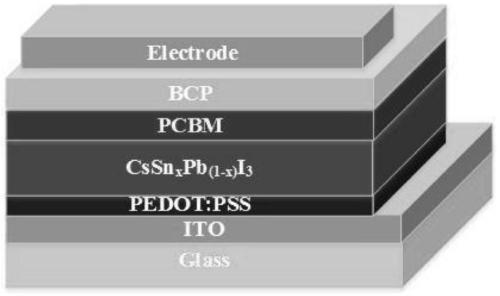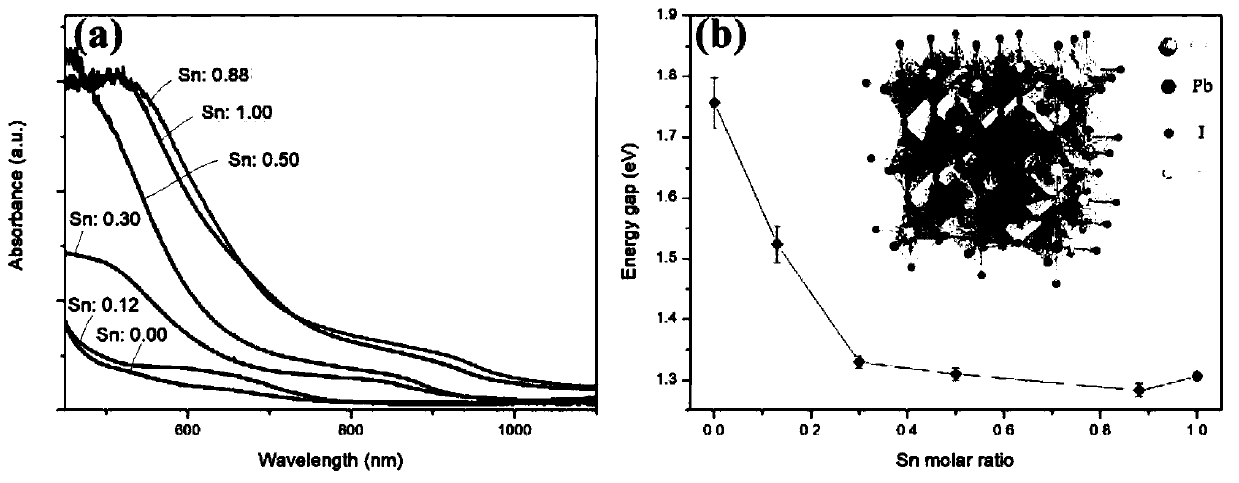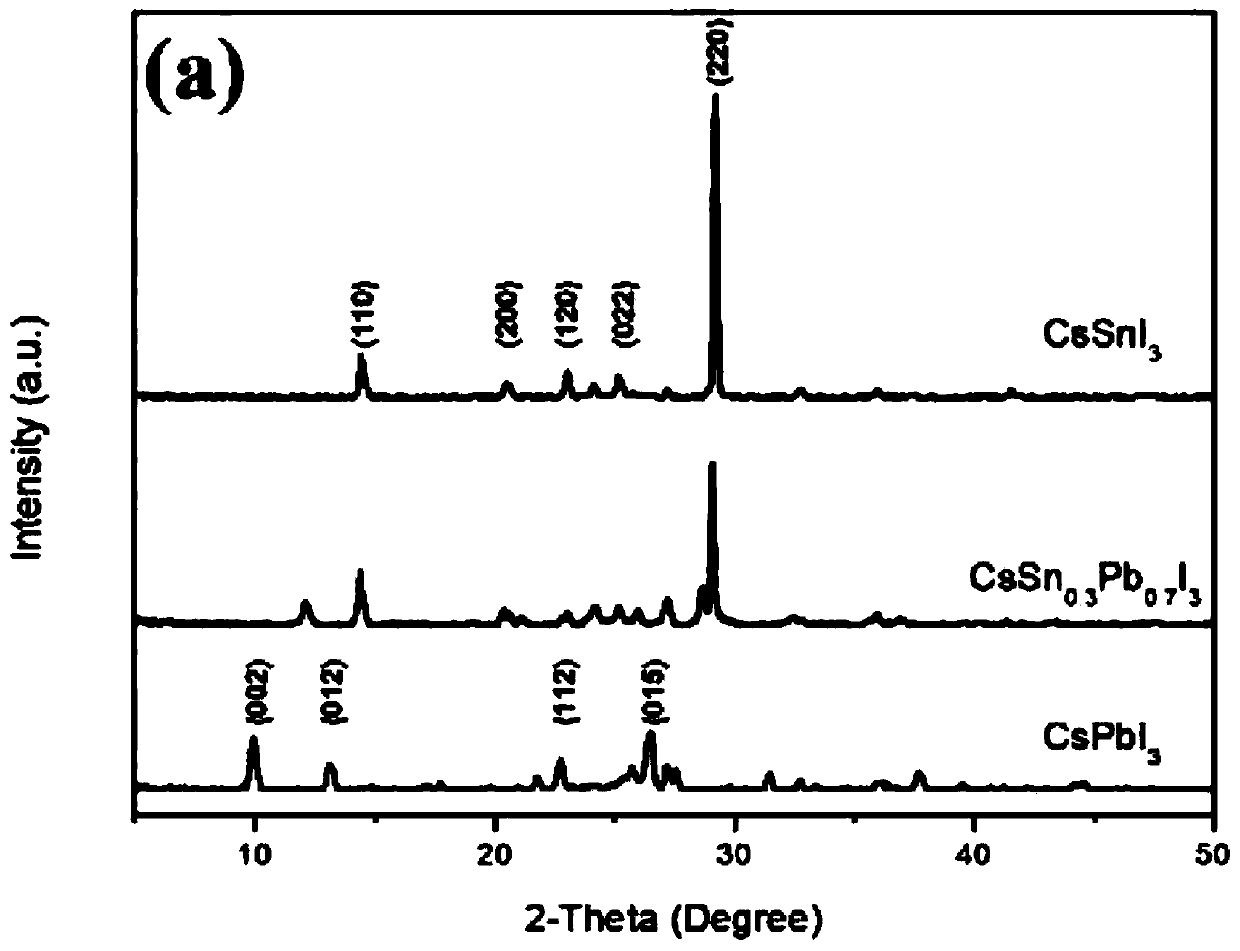A sn-pb alloy inorganic perovskite film and its application in solar cells
A solar cell and perovskite technology, applied in inorganic chemistry, circuits, photovoltaic power generation, etc., can solve the problems of reducing the photovoltaic performance of devices, reducing the spectral response of solar cells, increasing light absorption, etc., and achieving the effect of excellent phase stability.
- Summary
- Abstract
- Description
- Claims
- Application Information
AI Technical Summary
Problems solved by technology
Method used
Image
Examples
Embodiment Construction
[0034] The technical solutions of the present invention will be further described and illustrated through specific examples below. Unless otherwise specified, the raw materials used in the examples of the present invention are commonly used raw materials in the art, and the methods used in the examples are conventional methods in the art.
[0035] The term "perovskite" as used herein refers to a compound with CaTiO 3 The three-dimensional crystal structure related to the three-dimensional crystal structure of the material, the perovskite material can be formulated by the general formula [A][B][X] 3 means, wherein A is at least one cation, B is at least one cation, and X is at least one anion. In the present invention, A is Cs, B is Sn and Pb, and X is I.
[0036] The term "alloy" as used herein refers to a substance having two or more metal elements forming one or more metal phases.
[0037] In an example of the present invention, the preparation method of Sn-Pb inorganic a...
PUM
| Property | Measurement | Unit |
|---|---|---|
| thickness | aaaaa | aaaaa |
| optical band gap | aaaaa | aaaaa |
| charge carrier lifetime | aaaaa | aaaaa |
Abstract
Description
Claims
Application Information
 Login to View More
Login to View More - R&D
- Intellectual Property
- Life Sciences
- Materials
- Tech Scout
- Unparalleled Data Quality
- Higher Quality Content
- 60% Fewer Hallucinations
Browse by: Latest US Patents, China's latest patents, Technical Efficacy Thesaurus, Application Domain, Technology Topic, Popular Technical Reports.
© 2025 PatSnap. All rights reserved.Legal|Privacy policy|Modern Slavery Act Transparency Statement|Sitemap|About US| Contact US: help@patsnap.com



